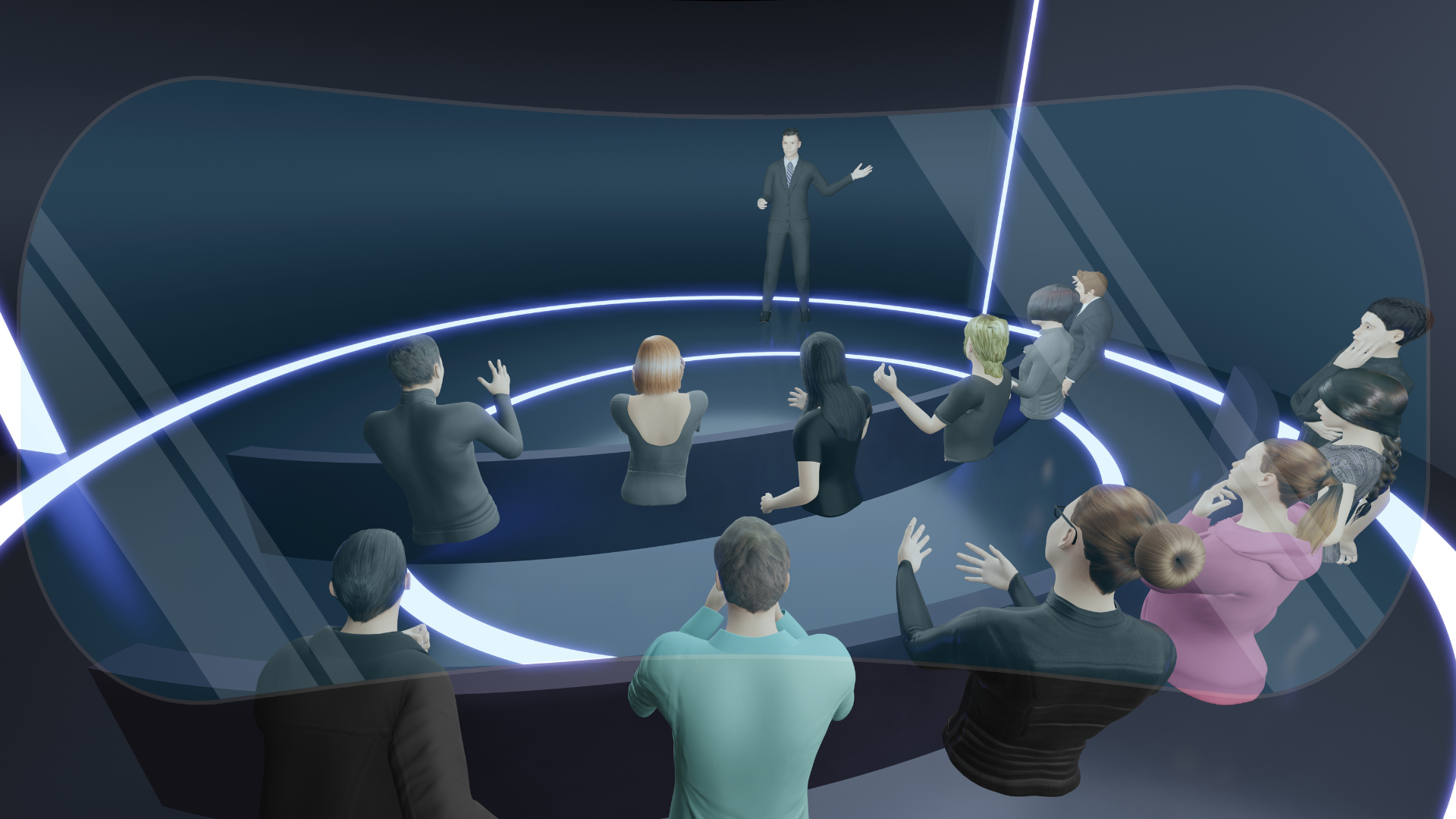Key Takeaways:
- Metaverse Redefines Design: Transitioning from 2D to 3D interfaces, the metaverse demands immersive experiences challenging traditional UI/UX norms.
- Ethical Design Imperative: With human-like interactions, designers must address ethical considerations like toxicity and bullying in virtual spaces.
- Observational Design Essential: Thorough user testing and data analysis are vital for creating metaverse experiences that resonate across physical and virtual realms.
- Data-Driven Decision Making: Utilising data analytics is crucial for informed design choices, shaping the future of digital experiences in the evolving metaverse landscape.
We have seen significant changes in digital user engagement over the last several years. The pandemic clearly triggered a wave of digital adoption, but it was less known how far that digitisation would extend. We are still working through the profound shifts that began after, changing the way we work, how we interact with digital tools, and upending traditional business models in our increasingly digitally connected world.
Consider the metaverse – the 3D equivalent of the Internet. Instead of connecting to the Internet, we will be able to ‘live’ within it through the use of virtual identities known as avatars. The metaverse is frequently referred to as a parallel virtual world where we will be able to work, learn, socialise, play, shop, and own assets.
This emerging digital ecosystem has already attracted significant global attention and investment enabling the potential to completely reshape what it means to be ‘online’ in the future. Digital designers including UI/UX designers will play a crucial role in making the metaverse accessible to all.
The question is how will the metaverse influence UI/UX design?
In the world of business, UI/UX design is subjected to a few general principles. Its objective is to give customers an immersive experience as they engage with a brand’s online presence.
These (both new and timeless) trends are expected to rule UI/UX design in the metaverse.
#1 3D Design – It makes a big difference
Design for the metaverse will require a shift from 2D sketching practices to 3D modelling tools capable of creating immersive virtual spaces and experiences. We will no longer ‘see’ the Internet on computer monitors but will instead ‘experience’ it through virtual reality headsets. Users will most certainly evolve into a metaverse avatar and being online will involve interaction as a 3D active participant in an immersive virtual network. In the metaverse, good design must be more than just user-friendly, aesthetically pleasing, and intuitive – it must be in 360° and completely immersive.
#2 Ethical Design – Designing with a conscience
Design decisions have never been more important for a seamless user experience than in the virtual world.
Designers will be forced to confront the ethics of their design decisions in much more profound ways as they view the metaverse as a human society, rather than a product or service. When a user leaves an unsavoury comment on a profile page, we do not experience the same emotions or act as a confrontation between two human beings in the real world. However, the metaverse views design through a more human lens. It employs space, time, and identity in ways that are much closer to our own reality, making the spectacle of two users fighting in a virtual world more visceral because the aggressors will appear as lifelike avatars standing “face-to-face.”
Top priorities for UI/UX designers will include managing toxicity, limiting bad behaviour, and bullying. These designers will have to learn to create multiple interconnected 3D environments that interoperate and communicate with one another; enabling people to work, socialise, and play in a fair and secure space.
#3 Observational Design – All eyes on the design
“The faculty of creating is never given to us all by itself. It always goes hand in hand with the gift of observation.” – Igor Stravinsky
It doesn’t matter if it’s a website or a brand; a good design always necessitates keen observation.
Designers will need to consider how their products will behave in various physical environments. The metaverse will eventually transform devices serving as gateways to new virtual worlds, such as through VR headsets from real-world locations. The challenge for metaverse designers is determining whether the designed experience is comprehensive enough to inspire goal pursuits, rather than how quickly a user can achieve a goal.
Examine your competitors more closely and start user testing. Assessing your current engagement statistics, audience demographics and site analytics provides a solid foundation for progress. UI/UX designers must understand how their target demographic currently interacts with the metaverse and how their products and services will perform in novel virtual settings.
#4 Data-driven design – Leverage data today to design the future tomorrow
In the digital world, data and design go hand in hand. We’re already building digital personas for ourselves without even realising it, and businesses will use data to harness those personas. From smart thermostats and smart watches, to virtual assistants and automated coffee machines, our world is teeming with the information that is used to design effective digital experiences.
The possibilities of the metaverse are endless for its users. Ultimately, metaverse design will seamlessly blend people’s real and virtual lives. It represents the next stage of digital transformation and technology journey, and at present, we are still in its early stages, giving designers an unprecedented opportunity to shape the future of the internet.
Related content: Creating Business Value through Great UX Design
Want to ensure your UX/UI design is optimal? We’re here to help. Get in touch with our experts here.




